Wild white indigo (
Baptisia lactea) is a tall, spring-flowering native of prairies and open, sunny sites. This large, adaptable perennial tolerates a wide range of soil types. Ideal sites include a perennial garden, prairie planting or large prairie, or along a sunny woodland edge.
You will be delighted by the upright form, blue-gray foliage that spreads horizontally, tall white flower heads and long bloom time. Don’t forget to look for bumblebees visiting the flowers, with initial visits by queen bumblebees and later visits by workers. This native perennial also provides interest in the garden after flowering with its large, inflated seedpods that hang from the flower stalks. The pods change color from light green to dark gray as the seeds mature inside.
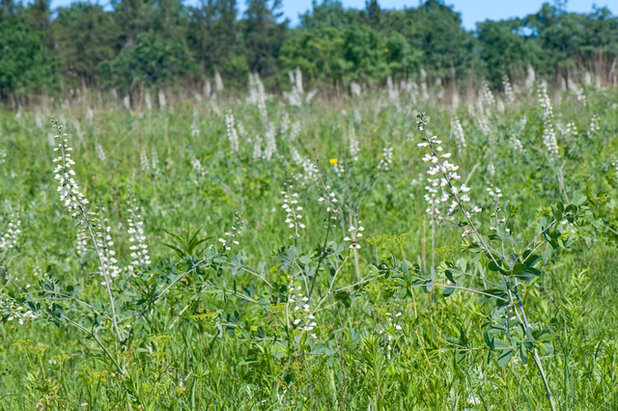
Holm Design & Consulting LLC
Botanical name: Baptisia lactea Common names: Wild white indigo, white false indigo
Origin: Occurs in the central and southeastern United States from Minnesota south to Texas, including Nebraska, Kansas and Oklahoma, east to Florida and North Carolina in the Southeast and Ohio in the North
Where it will grow: Hardy to minus 30 degrees Fahrenheit, or minus 34 degrees Celsius (USDA zones 4a to 9a; find your zone)
Typical plant communities: Prairies, savannas, sunny woodland edges
Soil requirement: Dry to mesic, sandy loam to clay soil
Light requirement: Partial sun to full sun
Mature size: 3 to 6 feet tall and 2 to 3 feet wide
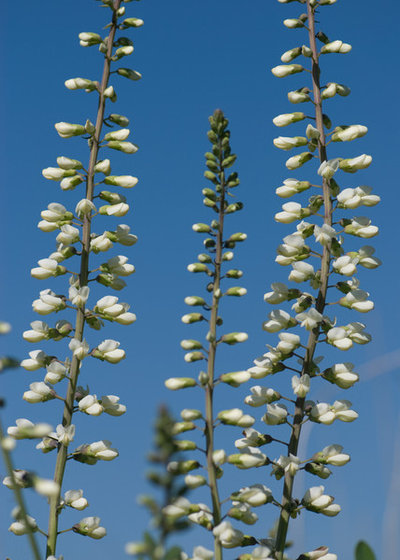
Holm Design & Consulting LLC
Benefits and tolerances: Tolerant of most soil types
Seasonal interest: Large white pea-like flowers open in late May through July; blue-gray horizontal foliage
When to plant: Spring or fall; potted plants are available from most native-plant nurseries
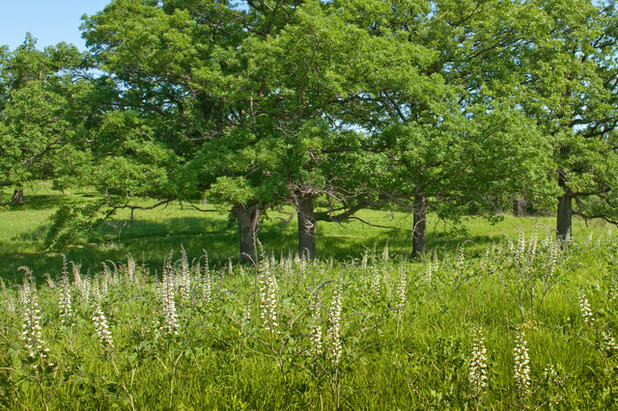
Holm Design & Consulting LLC
Distinguishing traits. Wild white indigo has long, linear flower heads; the flowers open on the flower shoot, called a raceme, from the bottom upward, providing more than a month of color. Another interesting trait is the large, inflated seedpods, which begin to form in late July; they are light green in color at first and turn dark gray in early fall.
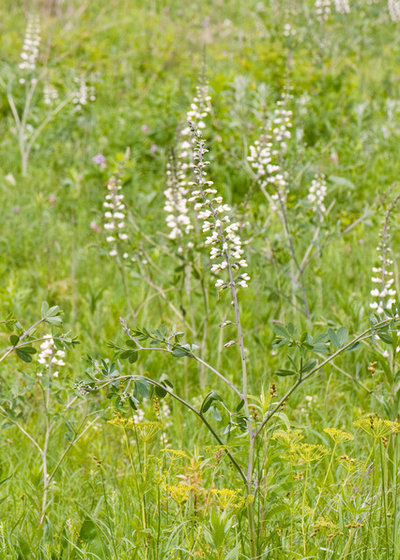
Holm Design & Consulting LLC
How to use it. Use wild white indigo in any open, sunny site with average soil, including in a formal perennial planting, in a prairie garden or along a sunny woodland edge.
Combine wild white indigo with medium-height prairie grasses, including prairie dropseed (
Sporobolus heterolepis) or little bluestem (
Schizachyrium scoparium). Good flowering plant companions include golden Alexanders (
Zizia aurea), foxglove beardtongue (
Penstemon digitalis), butterfly milkweed (
Asclepias tuberosa) and spiderwort (
Tradescantia spp.).
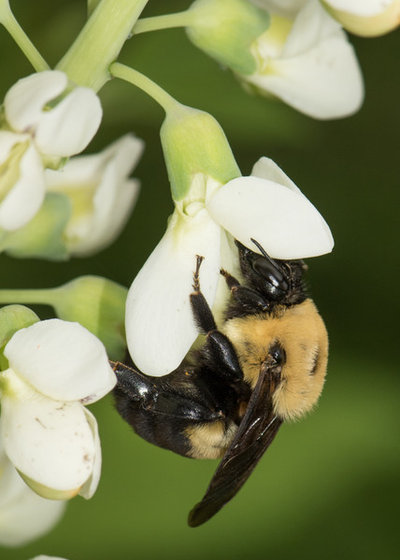
Holm Design & Consulting LLC
Planting notes. Wild white indigo is a long-lived perennial, with each plant increasing in diameter over time and producing more flower heads each season. Because of the plant’s broad reach, make sure you space your plants 2 to 3 feet apart to accommodate the mature size. This native perennial develops a taproot, so it’s difficult to transplant mature plants. Look for small seedlings in the spring and move them to a desired location before they mature.
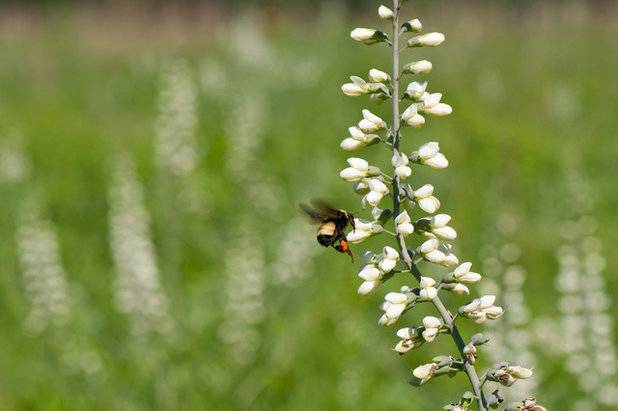
Holm Design & Consulting LLC
Pollinator notes. Wild white indigo flowers are an important source of nectar and pollen for bumblebees, including queen bumblebees just emerging from their winter hibernation.
Shown: A black and gold bumblebee (
Bombus auricomus)
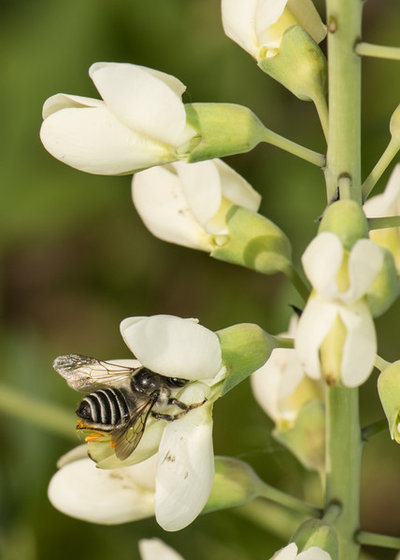
Holm Design & Consulting LLC
Access to the pea-shaped flowers and their rewards requires the bee to be strong enough to push down the bottom keel petals.
Shown: A leafcutter bee (
Megachile sp.)





